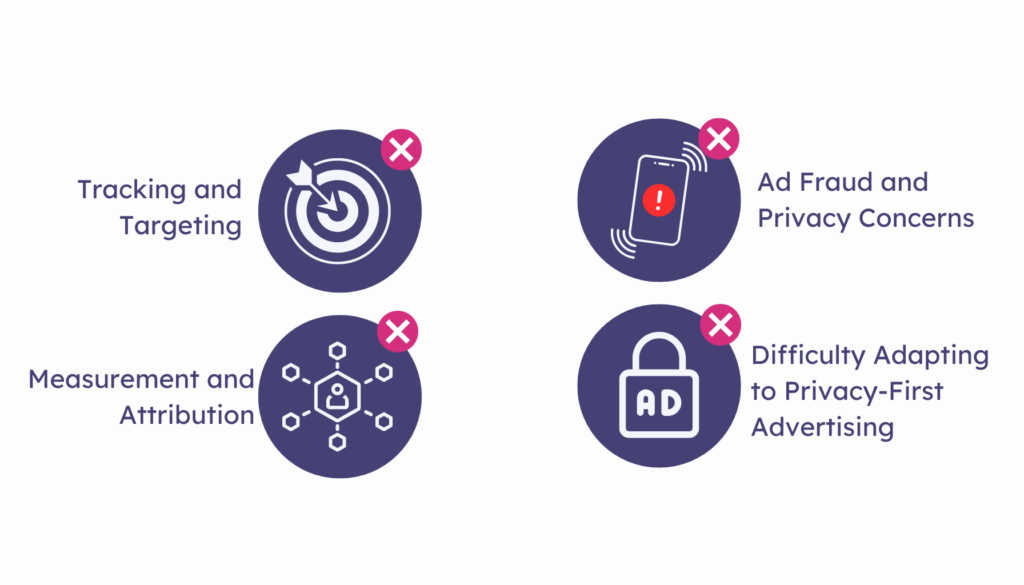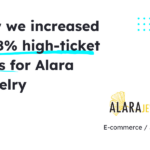
As the digital advertising landscape undergoes a profound transformation, marketing agencies find themselves at a crucial crossroads. The imminent phasing out of third-party cookies, driven by privacy concerns and regulatory changes, is set to reshape the way digital advertising functions, especially retargeting advertising.
Let’s explore the challenges these changes pose for marketing agencies and discuss various types of cookieless technologies that are emerging as alternatives.
The Death of Cookies and the Future of Digital Advertising
The digital advertising landscape is witnessing the gradual phasing out of third-party cookies. These cookies, which have long been instrumental in tracking and targeting users, are being deprecated due to rising privacy concerns and evolving industry practices. As a result, retargeting and personalized advertising face significant challenges. Without third-party cookies, the ability to track and target users across websites becomes limited, leading to a decrease in the effectiveness of these strategies.
Privacy regulations, such as the General Data Protection Regulation (GDPR) and the California Consumer Privacy Act (CCPA), have been implemented to address growing privacy concerns. These regulations impose restrictions on data collection and usage practices, including the use of cookies.
Moreover, user expectations regarding data privacy have undergone a notable shift. Users are now more conscious of their privacy rights and demand greater transparency, control, and consent over the collection and utilization of their personal information. These changing user expectations have triggered significant changes in digital advertising practices as the industry strives to align with evolving privacy standards.

Challenges for Marketing Agencies
Marketing agencies face a range of challenges in the era of cookieless retargeting. These challenges require strategic adaptation and innovative solutions to ensure continued effectiveness in driving revenue for their clients.
Tracking and Targeting
Cookies and advertising pixels have long been valuable tools for marketing agencies to track user behavior and gather data for their clients’ targeted advertising. These technologies allow agencies to place a unique identifier on a user’s browser, enabling them to track their online activities and collect valuable insights. With the end of cookies and pixels, agencies will face significant challenges in accurately tracking user activities and targeting specific audiences for their customers.
This limitation makes it difficult to create personalized advertising experiences and deliver targeted messages to the right audience at the right time. Agencies heavily rely on this targeting capability to optimize campaigns, increase conversion rates, and maximize return on ad spend.
Measurement and Attribution
Cookies and pixels play a crucial role in measuring the performance of advertising campaigns and attributing conversions. With the end of these tracking technologies, agencies will face difficulties in accurately measuring the impact of their advertising efforts and attributing conversions to specific campaigns or channels.
Attribution models that rely on cookies and pixels provide valuable insights into the customer journey, helping agencies understand which touchpoints contributed to conversions and where to allocate their advertising budgets. Without these mechanisms, agencies may struggle to determine the true impact of their campaigns and optimize their strategies accordingly.
To address this challenge, agencies will need to explore alternative attribution models and measurement methodologies. This may involve adopting more advanced analytics tools, leveraging machine learning algorithms, or partnering with third-party attribution providers. Additionally, agencies will need to work closely with their clients to establish clear goals and KPIs, enabling them to assess campaign performance using alternative metrics and measurement techniques.
Ad Fraud and Privacy Concerns
While cookies and pixels have their downsides, they also serve as a means to identify and prevent ad fraud. These technologies help agencies detect suspicious activities, such as bot traffic or click fraud, by monitoring user behavior and patterns. The end of cookies and pixels may expose agencies to increased risks of fraudulent activities, leading to wasted ad spend and compromised campaign results.
Agencies will need to adapt to these changes by adopting privacy-centric advertising methods, such as consent-based tracking and leveraging first-party data with explicit user consent.
Difficulty Adapting to Privacy-First Advertising
Marketing agencies need to build robust first-party data assets to overcome the limitations imposed by the decline of third-party cookies. This entails leveraging data collected directly from users through interactions with websites and applications. Implementing mechanisms such as consent management platforms, user registration, and incentivized opt-ins can facilitate the collection of first-party data while respecting user privacy preferences.
Additionally, agencies should explore privacy-enhancing technologies (PETs) to ensure compliance with privacy regulations and protect user data. Differential privacy, federated learning, and secure data anonymization are examples of PETs that enable marketers to analyze aggregated data without compromising individual user privacy.
Exploring Cookieless Retargeting Solutions
To address the challenges faced by marketing agencies in a post-cookie environment, innovative cookieless retargeting solutions have emerged. One solution is Pathmonk Retargeting, which offers a comprehensive and effective approach to reaching and engaging with users based on their intent without relying on third-party cookies.
2.5x better ad results with cookieless retargeting
Create high-converting retargeting ads based on your users' real-time intent.

Pathmonk Retargeting identifies users and their intent in real-time. By capturing and analyzing on-site interactions, such as scroll depth, mouse movements, and time spent on pages, Pathmonk creates a detailed understanding of user engagement. Then, when that user goes to an advertising platform, Retargeting is able to identify them and serve personalized retargeting ads, without the need for cookies!
With this deep behavioral insight, Pathmonk Retargeting enables marketing agencies to deliver highly personalized and relevant ads to users based on their specific interests and actions. The solution increases the chances of capturing user attention and driving conversions, optimizing their campaigns’ ROI, and keeping their clients happy.
Pathmonk Retargeting offers seamless integration with various advertising platforms, making it easy for marketing agencies to incorporate the solution into their existing advertising workflows. While also providing comprehensive analytics and reporting, allowing agencies to measure the effectiveness of their campaigns and optimize performance based on actionable insights.
Conclusion
The shift toward a cookieless advertising landscape presents challenges and opportunities for marketing agencies. By adapting targeting methods, optimizing measurement approaches, and exploring innovative cookieless retargeting solutions, agencies can overcome these challenges and thrive in a privacy-conscious digital advertising era.
Embracing privacy-first strategies and leveraging advanced technologies will enable agencies to deliver personalized experiences, drive conversions, and achieve marketing objectives in the evolving digital advertising landscape.








